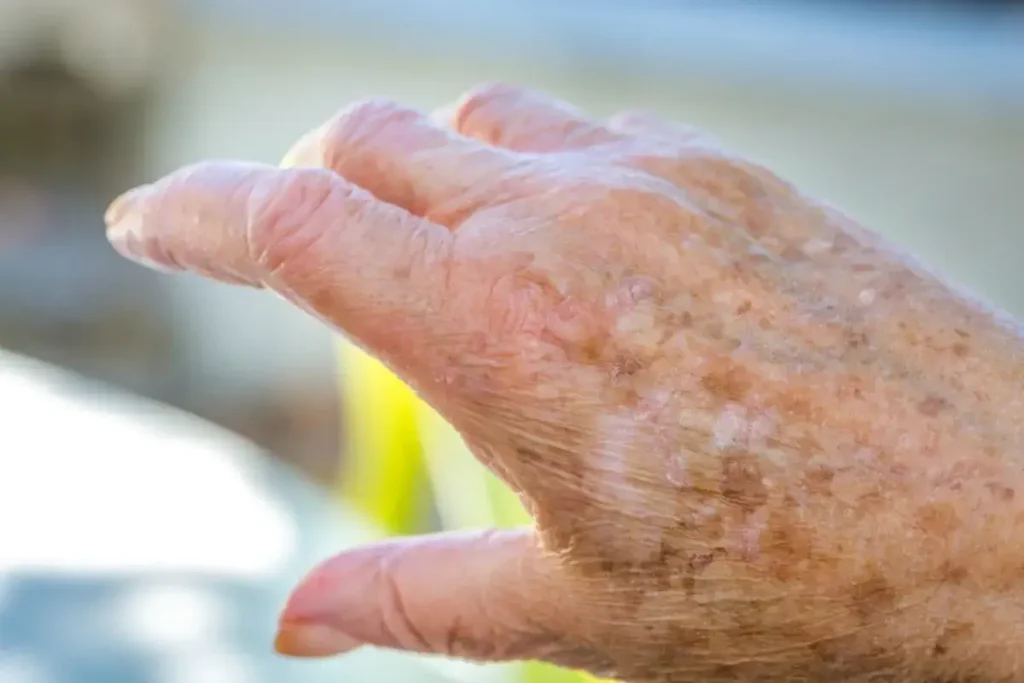
Dry Skin in the Elderly: Causes, Symptoms, Home Remedies
Dry skin in the elderly is one of the most common skin diseases in the elderly, affecting about 75 percent of adults aged 60 to 70. As we age, the skin changes, becomes thinner, loses its fat, and is no longer as smooth and even as it used to be. Veins and bones become more visible, and scratches and wounds on the surface of the skin take longer to heal.
Many elderly people suffer from dry and flaky skin in the elbows, arms, and legs. At this age, the skin becomes irritated and external factors have a greater effect on it, and this is one of the signs of skin aging. Because with age, due to the decrease in water in the lower layers of the skin, the decrease in the turnover of skin cells, and the skin’s limited capacity to retain moisture, the skin cracks, itches, and bleeds.
Understanding why the skin becomes dry with age is the first step to finding effective ways to beauty and a senior and treat dry skin in the elderly.. From the importance of hydration to choosing the right skin care products, every step you take to maintain the health and balance of your skin should be done with care and attention.
There are several ways to prevent xerosis (dry skin) in older adults, which we will mention in this article from the Human Health Mag website. We will also explain the symptoms of senile xerosis, its causes, and important skin care tips.
What Causes Dry Skin on Older People?
As we said, with age, the skin becomes thinner and some of the fat and oils on the skin are lost. This process gradually makes the skin more vulnerable. In fact, as we age, a person’s skin becomes thinner and loses the volume of water it used to contain.
So, dry skin in the elderly is the result of natural changes and decreased skin function with age. Various reasons contribute to this problem. In the rest of this section, we will examine the main factors that affect dry skin in the elderly:
- Reduced natural fat production main causes of dry skin in adults
With age, the sebaceous glands, which are responsible for producing natural fats in the skin, are less active. As a result, sebum production (natural skin fat) decreases, and the structure of the skin’s collagen and elastin changes. This dysfunction of the sebaceous glands leads to a decrease in elasticity and moisture retention in the skin with age, which leads to dry skin. Also, with the loss of fat on the skin, the defense barriers to combat skin problems and diseases are destroyed. In these conditions, various diseases such as eczema, contact dermatitis and psoriasis develop.
- Over-washing and use of detergent products
Frequent washing with harsh soaps and detergents can strip the skin of its natural oils, making it even more dry. Using hot water and alkaline soaps can destroy the protective fat layers of the skin. These types of detergent products cause dryness and damage to the skin surface by changing the pH of the skin. To prevent these problems, it is necessary to choose products with a balanced pH and appropriate moisturizing ingredients.
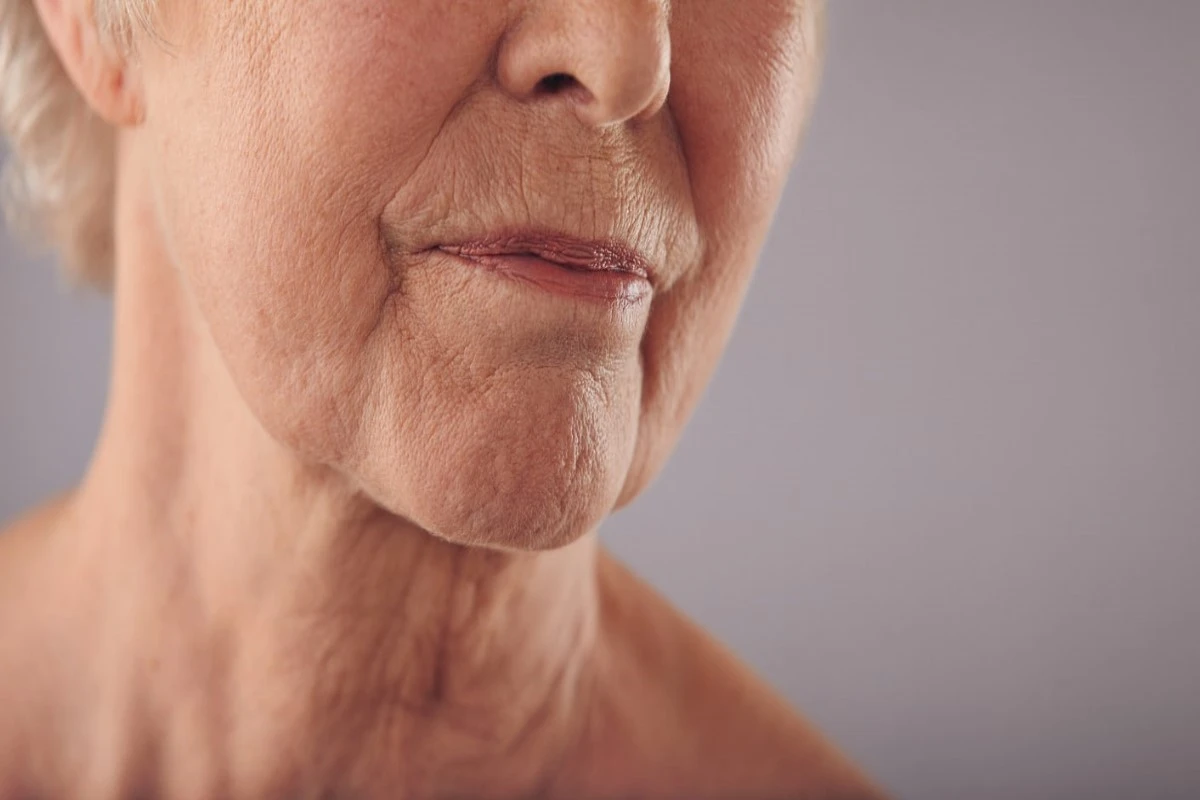
- Reduced function of skin layers
As we age, the layers of the skin, such as the stratum corneum and dermis, which are responsible for maintaining moisture and elasticity of the skin, become less functional. The stratum corneum, which contains protective lipids and ceramides, plays an important role in preventing moisture evaporation. Reduced function of these layers causes the skin to become dry and sensitive.
- Environmental influences and weather conditions
Environmental factors such as dry weather, wind, and excessive exposure to sunlight can reduce the natural moisture of the skin. Cold and hot seasons can especially exacerbate dry skin by reducing the humidity in the air.
- Diseases and medications
Some chronic diseases such as diabetes, thyroid, and kidney diseases can lead to dry skin in the elderly. Also, medications such as diuretics, some blood pressure medications, and anti-acne medications can reduce skin moisture.
- Dehydration and poor nutrition
Being dehydrated and drinking too little fluid can lead to senile xerosis. Poor nutrition and a lack of essential nutrients like omega-3 fatty acids and vitamins A, C, and E can also affect skin health.
Symptoms of Dry Skin in the Elderly
In the elderly, the skin cracks due to a decrease in moisture in the underlying layers, which can lead to itching, bleeding, and dermatitis. Dry skin of the elderly can be accompanied by various symptoms that can indicate the need for more skin care. Here are some of the most important symptoms of dry skin in the elderly:
- Itching which can be very annoying and lead to further damage such as scratched wounds. This itching is caused by a lack of moisture and damage to the protective layer of the skin, which allows external factors to easily enter the skin. The skin may also become rough and rough and lose its softness.
- The skin may become scaly and dry, dead layers may appear on the surface of the skin.
- Severe dryness can lead to the formation of fine wrinkles and even deep cracks in the skin. Cracks are usually more common in drier areas such as the hands, feet, and arms, and can cause itching and discomfort.
- The skin may turn gray or red due to lack of moisture, and in some cases, inflammation and redness may also be observed.
- A feeling of tightness of the skin, especially after bathing or swimming, which is caused by a decrease in the skin’s natural oils and lack of moisture, and can reduce the skin’s elasticity.
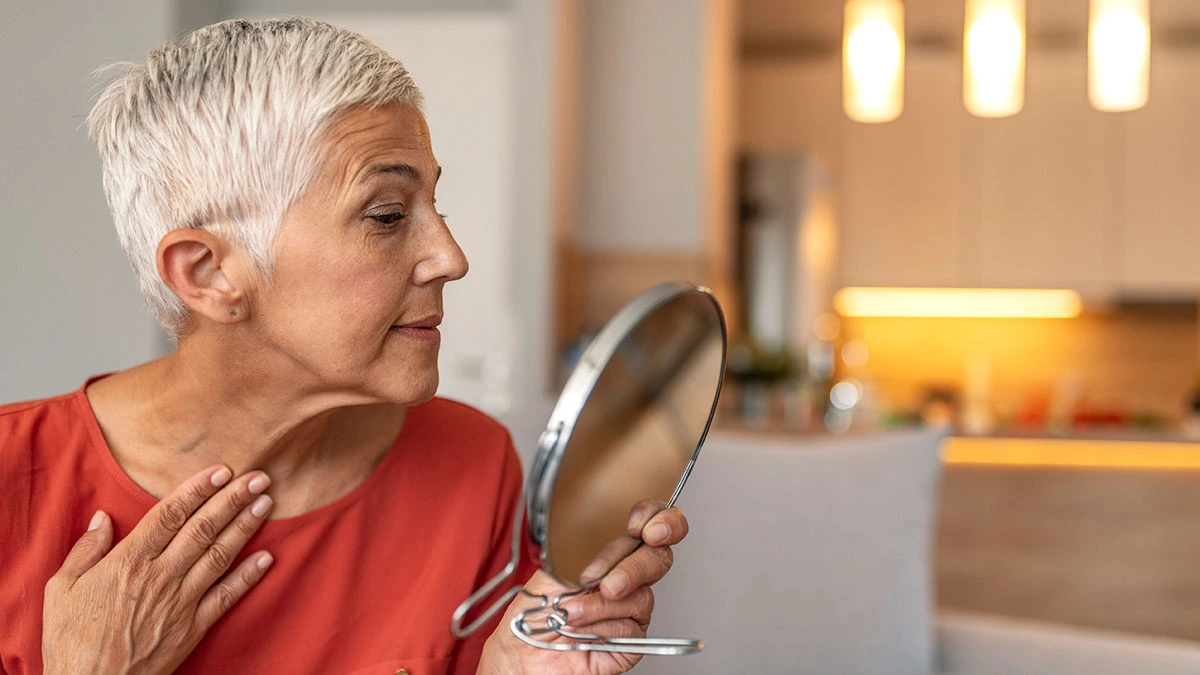
How to Prevent Dry Skin of the Elderly
Preventing dry skin, especially in the elderly, requires ongoing measures. By adopting simple but effective approaches, you can reduce the impact of factors that lead to dry skin. As you age, the skin of elderly people becomes thinner and more vulnerable to external factors. The reason for thinning skin is the loss of water and fat inside the skin.
To preventing and managing dry skin in older people, you can try some of the following solutions. By doing these methods in your daily routine, you can not only prevent dry skin but also help improve the overall health of your skin. In addition, these preventive measures are useful not only for the elderly but for people of all ages.
- At this age, it is better for a person’s skin routine products to have a low alkaline rating and harsh chemicals such as sulfates or surfactants and moisturizing properties.
- Regularly use lotions, creams, and oils to moisturize the skin, especially after washing.
- Keep your baths short and avoid showers that are too hot or too cold.
- Avoid products that contain alcohol or perfume.
- Choose clothes that don’t irritate your skin.
- Drink more water. We recommend drinking at least 8 glasses of water a day.
- Consuming fruits and vegetables can also help keep your body hydrated.
- In cold and dry seasons, wear gloves and protective clothing to prevent direct skin contact with cold air.
- Wear sunscreen with an appropriate SPF, even on cloudy days, to protect your skin from harmful UV rays.
- Use air humidifiers to increase the humidity of the environment, especially in dry climates or in the fall and winter seasons.
- Eat a diet rich in omega-3 fatty acids, vitamins A, C, E, and zinc. Avoid foods that age you. We also recommend regular consumption of fish, nuts, seeds, and green leafy vegetables. Research shows that taking certain vitamins and supplements, including vitamin D, fish oil, collagen, and vitamin C, can help increase skin hydration and health.
- Plan a daily and weekly skin care routine, including gentle exfoliation to remove dead skin cells and moisturizing masks to nourish your skin.
- Wear special gloves when doing housework and gardening. Because in these environments, people’s skin is exposed to chemicals, sunlight, and other substances that irritate and dry the skin.
How to Treat Dry Skin for Seniors
Dry skin in the elderly can lead to more serious problems that require special treatments. In cases where home remedies are unable to eliminate dry skin, it is necessary to visit specialists and use specialized treatment methods. These treatments can help improve the condition of the skin and reduce the symptoms of dryness.
One of the effective ways to manage this problem is to consult a dermatologist. The specialist can provide specific treatment recommendations by carefully assessing the skin. The dermatologist may prescribe creams, lotions, or drug treatments that are for more severe cases of dry skin and can help relieve the skin condition.
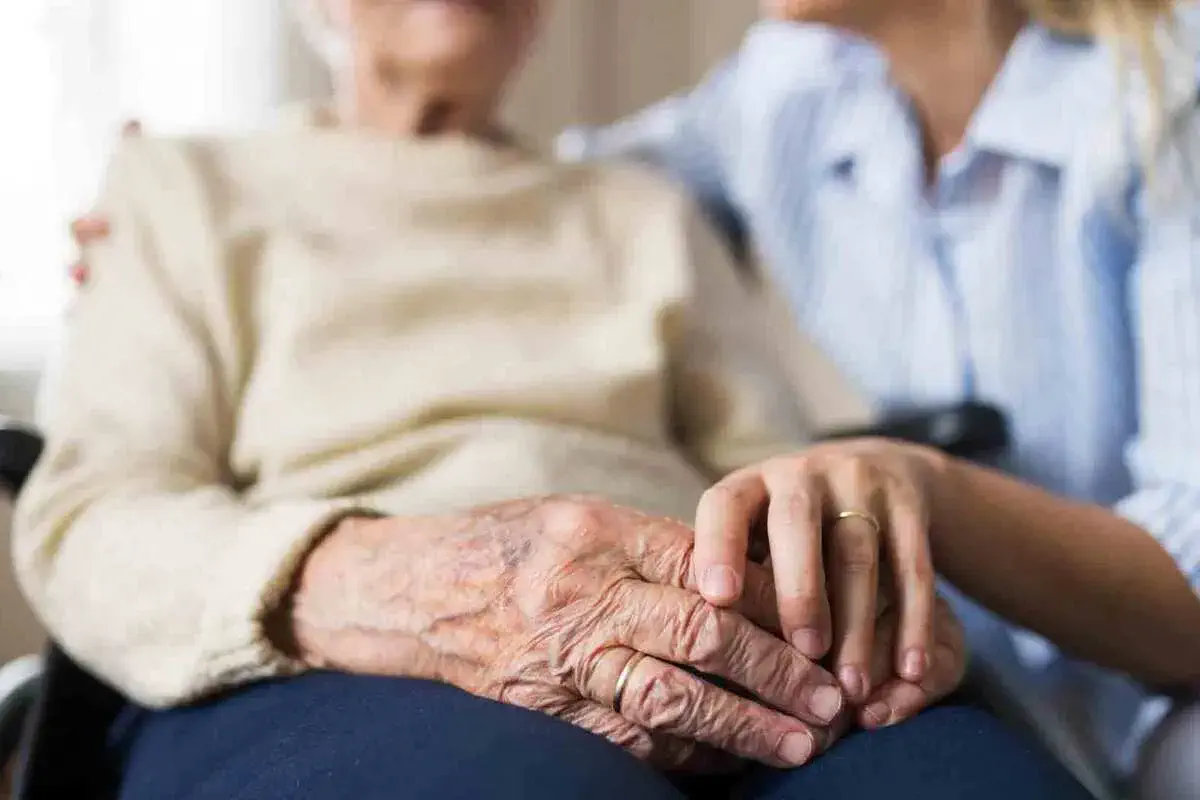
In some cases, dry skin in the elderly leads to dermatitis and itchy skin. In these cases, treatment may include lotions containing hydrocortisone. In cases of severe peeling, the specialist may prescribe a wet dressing to prevent infection. In severe cases of dry skin that do not respond to conventional treatments, specialized treatments such as phototherapy can be helpful.
Phototherapy, or light therapy, can help relieve skin conditions such as psoriasis and eczema, which themselves cause dry skin. HydraFacial and other deep moisturizing treatments can be effective solutions to treat this problem. These treatments, which are usually offered in dermatology clinics, help nourish and repair the skin deeply, restoring the necessary moisture to the skin. These methods are especially recommended for very dry and damaged skin.
Home Remedies for Dry Skin in the Elderly
Dry skin in the elderly is a common problem that can be managed well with proper home care. Home remedies can be easily done at home and can soothe and improve the skin condition. There are various types of home remedies that a person can use to relieve dry skin. Many of the items mentioned can act as natural moisturizers.
- Sunflower seed oil: Research has shown that sunflower seed oil is very suitable as a moisturizer and hydrator for elbows. According to this research, some natural oils such as olive oil cannot be used as a moisturizer.
- Coconut oil: Another natural oil that is useful and effective for treating dry skin, as it significantly improves hydration and increases the skin’s surface fats. Coconut oil contains saturated acids that have skin softening properties.
- Drink milk: According to research, phospholipids, or the fat found in milk, can be a good barrier to damage to surface fats and the occurrence of dry skin.
- Banana and olive oil mask: Banana and olive oil mask is another useful option for home treatment of dry skin in the elderly. Banana acts as a natural moisturizer and olive oil can help repair damaged skin due to its antioxidants. This combination can be applied as a puree on the skin and washed after a period of time to achieve better results.
- Aloe vera: Consuming aloe vera relieves the symptoms of dry skin. A person with dry skin can use aloe vera gel on the affected area.
- Oatmeal: Using creams that contain oats can be effective for dry skin. Oat extracts have anti-inflammatory and antioxidant properties and will be very effective in treating and combating dry skin in the elderly.
- Honey and avocado mask: The combination of honey and avocado is an excellent solution for treating dry skin in the elderly. Honey can add moisture to the skin due to its natural moisturizing properties, and avocado, with its healthy fats, helps nourish and soften the skin. This mixture can be applied directly to the skin and washed off after 15 to 20 minutes to leave the skin soft and moisturized.
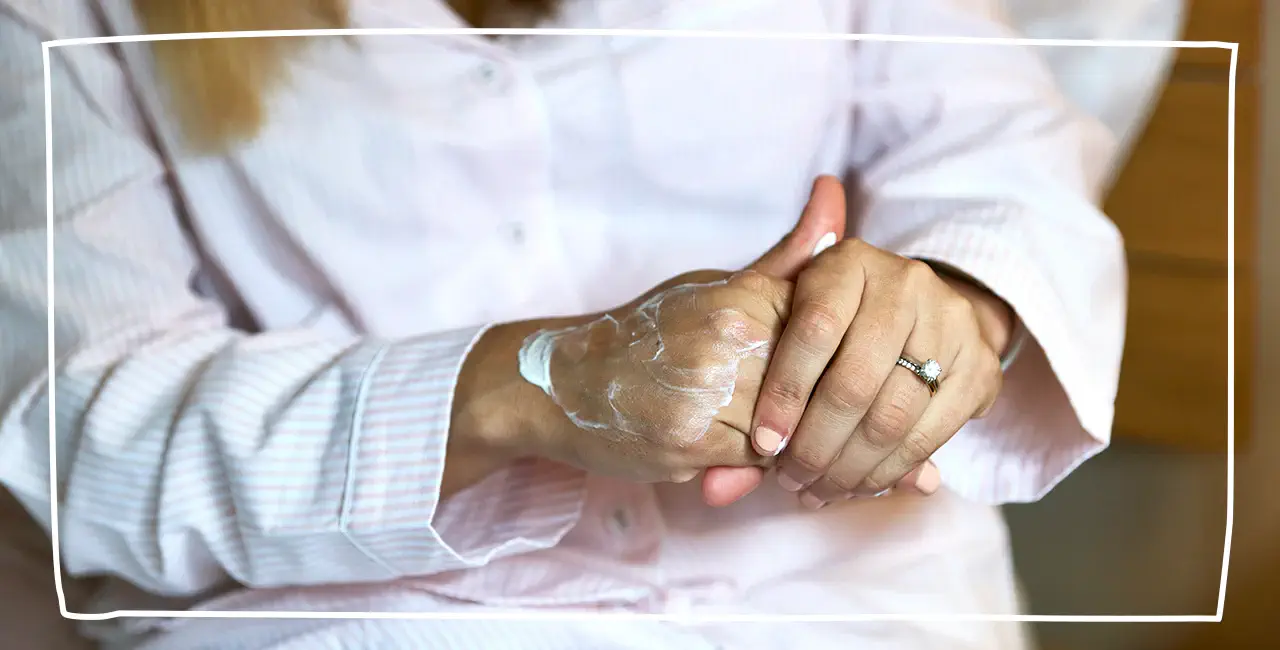
Recommended Products for Treating Dry Skin in the Elderly
- Choosing creams and lotions that contain strong moisturizers like glycerin, urea, lanolin, and hyaluronic acid
- Products with repairing ingredients like ceramides
- Oils like argan oil, jojoba oil, and coconut oil
- Choosing products that are free of parabens, alcohols, and harsh synthetics
- Products labeled “gentle” or “for sensitive skin”
- Choosing creams and lotions that contain natural extracts like aloe vera, calendula, or chamomile
- Daily use of sunscreen with SPF and the right formulation
Deciding When to See a Doctor or a Dermatologist
- If dry skin is accompanied by severe itching, redness, cracking, or bleeding.
- If dry skin does not improve with home care and moisturizing products.
- If new or worrying skin symptoms appear that have not been experienced before.
Concluding Remarks
Dry skin is one of the most common problems in the elderly, affecting almost all older people. This problem occurs due to the decrease in water and fat in the skin with age, which leads to cracking, itching and increased vulnerability of the skin. To prevent and treat senile xerosis, seniors should use appropriate skin care products, maintain adequate hydration, and use mild soaps and moisturizers.
In addition to these, home remedies such as using natural oils and aloe vera can also help improve the skin condition. It is important to remember that each person’s skin is unique and may respond differently to different treatments and products. Finally, periodic skin check-ups, consulting a specialist, and Skin care in old age as part of daily routine can help control this condition.
We’ve shared our thoughts and now it’s YOUR turn! Please share your insights in the comments, and let’s start a meaningful discussion that will help others, too!

Frequently Asked Questions
How to treat dry skin in old age at home?
Using strong moisturizers, natural oils like coconut or jojoba oil, and nourishing natural masks can help soothe and repair dry skin. Also, drinking plenty of water and eating a diet rich in essential nutrients are beneficial for healthy skin.
What are the symptoms of dry skin in older adults?
Among the main symptoms of this problem, we can mention peeling and small cracks, itching and irritation, as well as redness and inflammation.
Can nutrition affect xerosis in old age?
A diet rich in omega-3 fatty acids, vitamins A, C, E, and zinc can help promote healthy skin and combat dryness.
What causes dry feet in the elderly?
Dry skin on the feet in the elderly usually occurs due to a decrease in the skin’s natural moisture, slowed blood circulation, and decreased activity of the sebaceous glands with age. Factors such as diabetes, drinking less water, using strong soaps, or dry air can also aggravate this problem.
